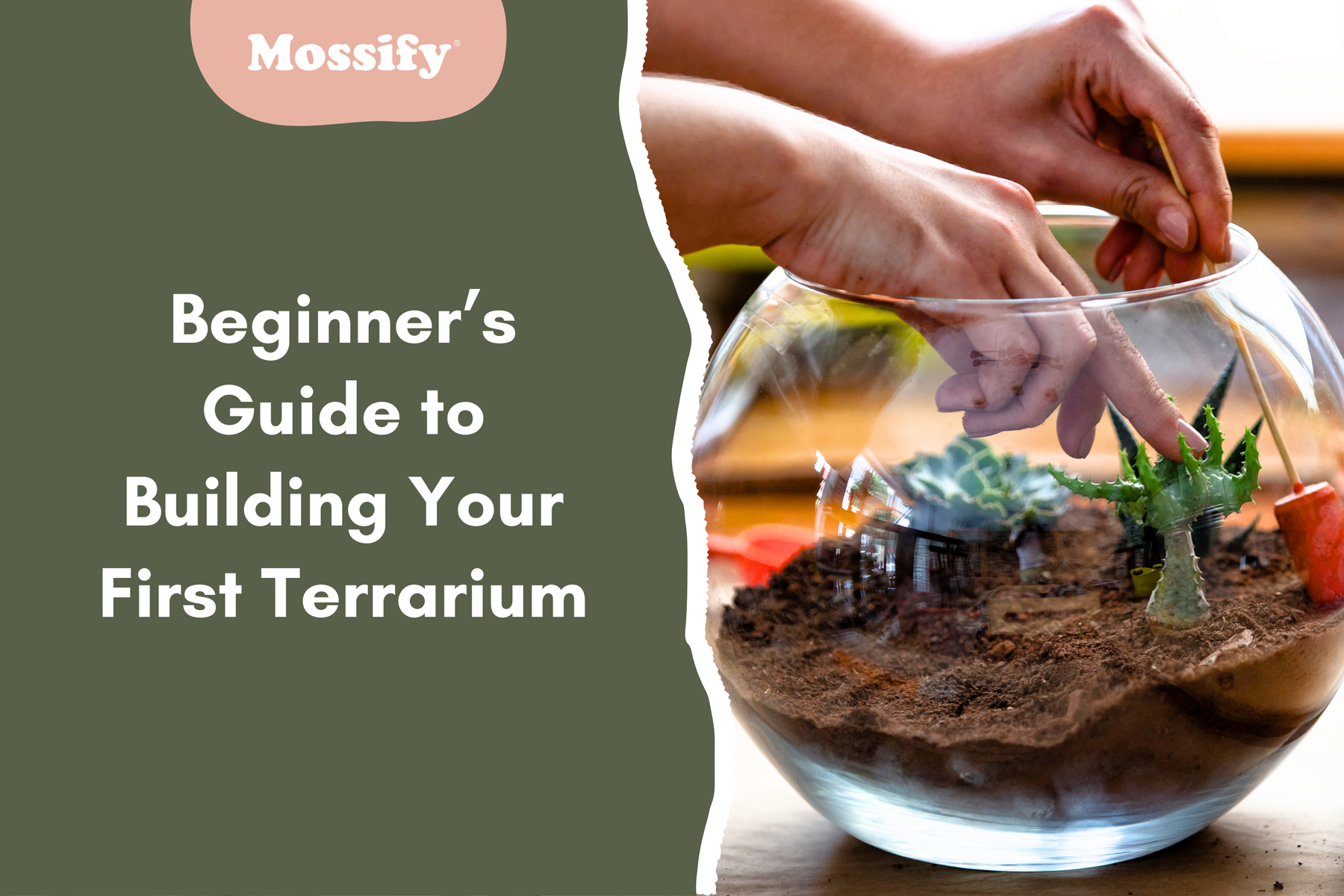With over 300,000 happy plants.
Over 300,000 happy plants

Créer un terrarium, c'est comme mettre en place un monde miniature à l'intérieur d'un récipient en verre. C'est une activité enrichissante qui allie nature et créativité, vous permettant de profiter d'un petit bout de nature à l'intérieur. Suivez ce guide détaillé, étape par étape, pour construire votre premier terrarium, conçu pour les débutants mais suffisamment enrichissant pour les jardiniers de tous niveaux.

Le choix du bon contenant donne le ton à votre terrarium. Vous pouvez utiliser n'importe quel récipient en verre transparent, mais assurez-vous qu'il est propre et transparent pour permettre une pénétration maximale de la lumière. Les choix les plus populaires incluent les aquariums, les bocaux Mason, les pots d'apothicaire et même les contenants spécialisés pour terrarium disponibles dans les magasins de jardinage.
Tenez également compte de la taille et de l'ouverture de votre contenant. Une ouverture plus grande facilite la plantation, surtout si vous prévoyez d'utiliser des outils ou d'avoir des éléments plus grands à l'intérieur. Cependant, une ouverture plus petite peut créer un environnement d'humidité plus contrôlé, ce qui est parfait pour les plantes qui aiment l'humidité.

Votre terrarium a besoin d'une fondation solide. Commencez par une couche de galets ou de petites pierres pour créer une couche de drainage. C'est essentiel car cela empêche l'eau de s'accumuler au fond, ce qui pourrait provoquer la pourriture des racines.
Ajoutez une couche de charbon actif sur les pierres. Ce n’est pas seulement une question de décoration : cela permet de filtrer l’air et l’eau du terrarium, de garder l’environnement frais et exempt de croissance bactérienne et fongique.
Ensuite, ajoutez une généreuse couche de mousse de sphaigne . Ce type de mousse est excellent pour la rétention d'humidité et agira comme une barrière pour empêcher le sol de s'infiltrer dans le charbon et les pierres.
Enfin, ajoutez votre terreau. Un mélange de terre léger et poreux est idéal. Pour les plantes qui aiment l'humidité, ajoutez de la mousse forestière , qui peut améliorer la capacité du sol à retenir l'eau et fournir une base riche en nutriments.

Choisissez des plantes suffisamment petites pour tenir dans votre contenant et qui ne deviendront pas trop grandes. Vous devez tenir compte des conditions climatiques dont chaque plante a besoin pour s'épanouir, comme l'humidité, la lumière et la température.
Pour un terrarium humide, optez pour des fougères, des petites orchidées et différents types de mousse comme la mousse espagnole. La mousse espagnole est particulièrement utile pour ajouter un attrait esthétique et fonctionnel, car elle aide à maintenir l'humidité et peut être drapée sur des branches ou des rochers pour un aspect marécageux mystique.
La plantation doit être effectuée avec soin. Utilisez une cuillère ou une petite truelle pour creuser de petits trous, puis placez chaque plante à l'intérieur, en tapotant doucement le sol autour d'elle pour la fixer. Commencez par la plus grande plante et passez à la plus petite, en vous assurant que chacune a suffisamment d'espace pour pousser.

Maintenant que vos plantes sont en place, personnalisez votre terrarium en y ajoutant des éléments naturels qui rehaussent sa beauté et la santé de son écosystème. Vous pouvez y inclure de plus grosses pierres, de beaux morceaux de bois flotté ou même des figurines fantaisistes.
De plus, une couche supérieure de mousse espagnole peut être ajoutée pour sa valeur esthétique et ses avantages pratiques. Elle est non seulement esthétique, mais contribue également à garder le sol humide et à maintenir l'humidité dans le terrarium.
Placez votre terrarium dans un endroit qui reçoit indirectement la lumière du soleil. La lumière directe du soleil peut provoquer un échauffement excessif du terrarium, ce qui peut endommager les plantes. Arrosez avec parcimonie, car l'environnement clos aide à retenir l'humidité. Pour un terrarium ouvert, arrosez lorsque le sol semble sec, mais veillez à ne pas trop arroser.
Surveillez votre terrarium pour détecter tout signe d'arrosage excessif ou insuffisant et ajustez-le si nécessaire. Taillez les plantes trop grandes ou mortes pour que le terrarium reste propre et sain.
Construire un terrarium est une façon agréable d'introduire un morceau de nature dans votre maison. Cela nécessite un minimum d'entretien mais offre un maximum de beauté et une ambiance paisible. Que vous soyez un jardinier chevronné ou un débutant, la création d'un terrarium est un voyage créatif qui vous récompense avec un paysage vivant à admirer et à apprécier.
Laisser un commentaire